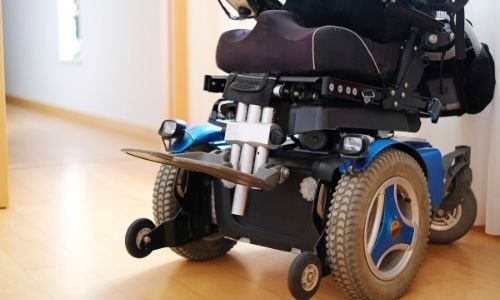Recently, JBH has seen a lot of interest in how electric wheelchairs work. Today, we will explore their design, components, and working principles from various angles. Through detailed analysis and explanation, we hope to enhance everyone’s appreciation of this assistive technology.
Background and Development of Electric Wheelchairs
Electric wheelchairs are designed to solve the travel problems of people with limited mobility and aging. Traditional manual wheelchairs require users to push them by hand, which is very difficult for some people with limited mobility or physical strength to use. Therefore, the advent of electric wheelchairs fills this gap and provides users with a more convenient and independent way to travel, just by gently pushing the joystick to move forward.
Components of Electric Wheelchairs
Batteries: Electric wheelchairs are usually equipped with rechargeable batteries, such as lithium-ion batteries. These batteries provide the required electrical energy and provide a power source for the normal operation of the electric wheelchair.
Motor: One of the core components of an electric wheelchair is the electric drive system, which usually uses a DC motor. The motor converts electrical energy into mechanical energy to drive the wheelchair forward, backward or turn.
Controller: The controller is the brain of the electric wheelchair and is responsible for monitoring and controlling the operation of the motor. The controller controls the speed and direction of the motor according to the user’s operating instructions to ensure that the wheelchair moves as the user wishes.
Control system: The control system includes devices such as joysticks, buttons or remote controls, through which the user sends instructions to the controller to control the speed, direction and stop of the wheelchair.
Working principle of electric wheelchair
The working principle of electric wheelchair can be simply summarized as: the battery provides electrical energy – the motor converts electrical energy into mechanical energy – the controller monitors and adjusts the operation of the motor – the user controls the movement of the wheelchair through the control system. These components work together to enable electric wheelchairs to provide users with a convenient and comfortable mobile experience.
When the user sends instructions through the control system, the controller receives the instructions and adjusts the speed and direction of the motor accordingly. The motor converts electrical energy into mechanical energy according to the instructions of the controller, driving the wheelchair forward, backward or turning. The whole process achieves efficient energy conversion and precise control, and it will be more refined in the future.
Electric wheelchairs are complex systems that combine mechanical engineering, electronic technology and human-computer interaction. The operation of electric wheelchairs depends on the precise coordination of motors, batteries, control systems, and wheels and tires. The motor provides driving force and the battery provides energy. The control system ensures smooth operation and the wheels and tires adapt to various terrains. By understanding these components and their interactions, users can better operate and maintain electric wheelchairs.
Future trends of electric wheelchairs
Electric wheelchairs in the future may be more intelligent and automated, such as obstacle avoidance and automatic navigation, which can improve user experience and safety. With the development of materials science and process technology, lightweight and portability are also major trends. The user group of electric wheelchairs is at a disadvantage in terms of strength, so how to make electric wheelchairs lighter but also in line with the structure of human bodies in various countries is also a difficult problem. I believe that JBH can achieve better breakthroughs in the future.
Although the working principle of electric wheelchairs is simple, it contains advanced technology and design concepts. Through the coordinated work of batteries, motors, controllers and control systems, electric wheelchairs achieve efficient and convenient mobility.


